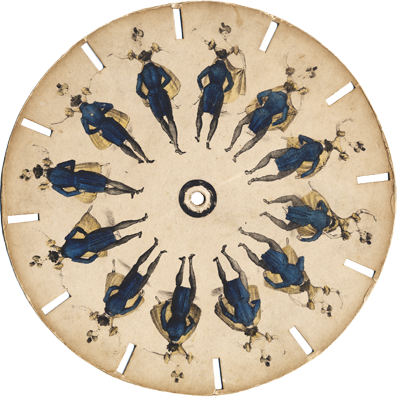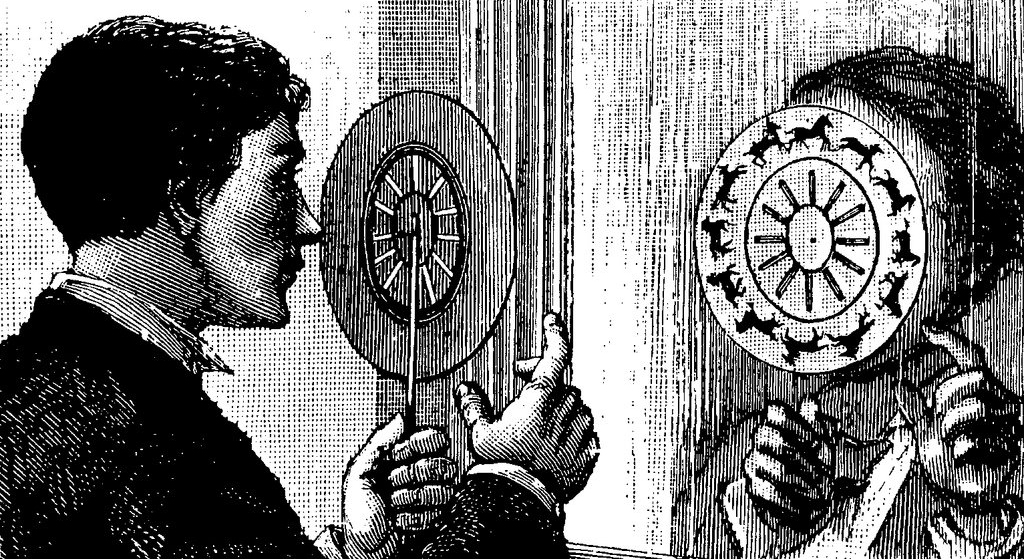

Introduction | Phenakistiscope | Thaumatrope | Zoetrope | Choreutoscope | Praxinoscope | Flip Books| Videos

Phenakistiscope
The Phenakistiscope was invented independently, and almost simultaneously, in 1833 by Belgian physicist Joseph Plateau (1801-1883) and Austrian physicist Simon Ritter von Stampfer (1792-1864). Stampfer was the first to patent a design for what he called the Stroboscopic Disc.
The term Phenakistiscope was introduced by French publisher Simon-François-Alphonse Giroux, who brought the device to market in France. In London, Rudolph Ackermann published a device with the names Phantasmascope and Fantascope, selling discs including Plateau’s own design, The Dancer. The toy consists of a paper disc featuring evenly spaced, thin radial slots and a series of sequential images. When the disc is rotated in front of a mirror, a single motion image is seen through the slits.
Projection Phenakistiscope
The Wheel of Life, or Projection Phenakistiscope, was patented in England by Thomas Ross in 1869 and again in 1871. At this time, it was the most famous and best-selling mechanical lantern slide. The Projection Phenakistiscope uses two discs, one with sequential images, the other with a single slot through which the user views the animation. Using a pulley and handle system, the two discs turn in contra-rotation, producing a motion picture on the screen.


Introduction | Phenakistiscope | Thaumatrope | Zoetrope | Choreutoscope | Praxinoscope | Flipbooks